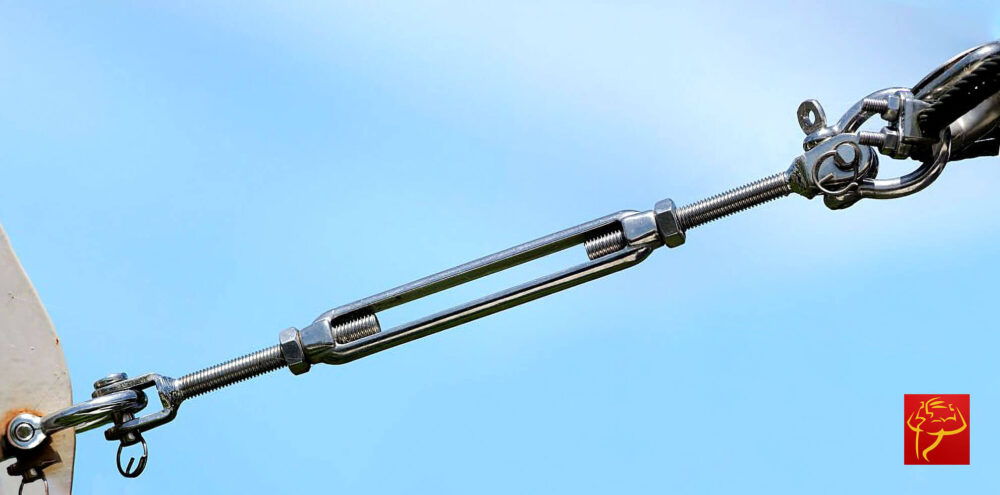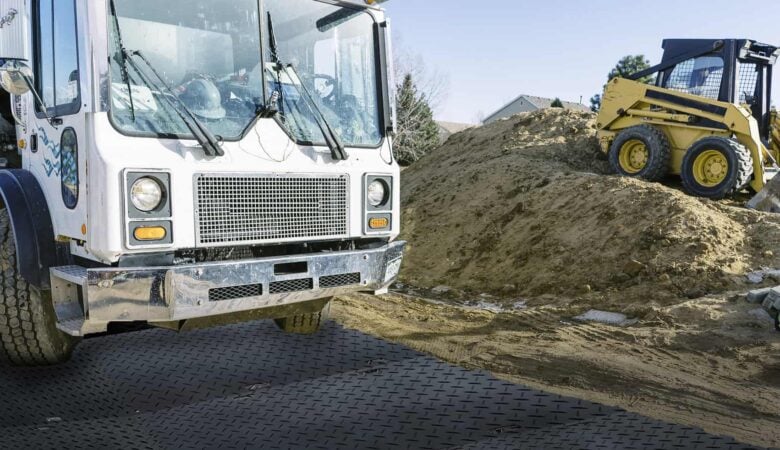Have you ever wondered how to use a Turnbuckle? This tensioning tool is often overlooked in the lifting and rigging industry. Many people doubt Turnbuckle’s capabilities in lifting applications. Though, they should remember that the use of a Turnbuckle can help make challenging lifts easier. They can even help adjust a load over a flatbed truck in the instance that it may be uncentered and might fall off during transit. Let’s go over how this rigging device can be used.
What Are Turnbuckles?
Turnbuckles, also known as bottlescrews, can do wonders for any lifting job. They’re primarily used in fishing, mining, oil, and shipping industries. You might be asking yourself ‘How can I use a Turnbuckle with wire?’ These threaded metal couplings can be used to connect, then increase or decrease the length of any piece of wire rope or a cable line. They can be used to adjust the slack within a tensioning assembly. Whatever your lifting needs are, the Turnbuckle must be able to withstand your load without breaking apart. A Turnbuckle’s galvanized or stainless steel composition allows it to complete such a fret.
Moreover, they come in various sizes, lengths, and configurations as well. In total, there are three parts that make up a Turnbuckle, which includes the body size, end-fittings, and threaded diameter. The type of Turnbuckle you choose falls solely on what materials your assembly requires.
What Is A Turnbuckle Used For?
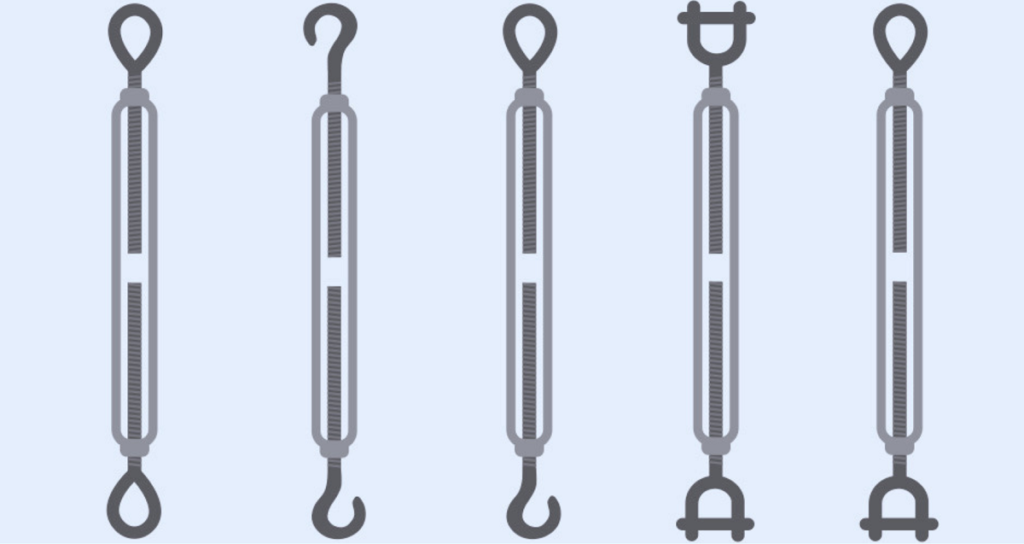
Though, the benefits of a Turnbuckle don’t just stop there. They have a wide array of other uses, such as adjusting and reducing slack in various tensioning assemblies. Most commonly, they act as tensioning devices that allow truckers or construction workers to adjust cable lines found in both mechanical and c applications. Here are some specific examples of how they can be used:
- They’re often used on watercraft to secure cables running from the vessel to the shoreline.
- Turnbuckles are also used to tension several lines simultaneously.
- They’re used on Theater Sets to help adjust the length of a cable, like curtain motors.
- On a ship, Turnbuckles can be used to rig sails, spars and other loads that require some additional tensioning.
- In the carpentry, plumbing and electrical industries they’re used to connect parts.
- For residential constructions, they connect the length of space between two posts.
- Also, they’re used to support swings and other recreational equipment at a public playground.
- During the construction of a suspension bridge, they’re used to adjust the cables or ropes.
- Turnbuckles have even been used in sports, such as boxing and wrestling rings.
At the end of the day, Turnbuckles are a crucial component in aiding with the adjustment of cables or ropes in any workplace setting.
What Are The Different Types of Turnbuckles?
While Turnbuckles are considered a multi-purpose tool, they are also offered in different styles and types. The most common styles in the market are Eye and Eye, Hook and Hook, Jaw and Jaw, Jaw and Eye and Hook and Eye. In turn, the type of end-fitting is pre-determined by what the Turnbuckle needs to connect to and whether or not it’s a permanent application.
1. Eye and Eye Turnbuckle:
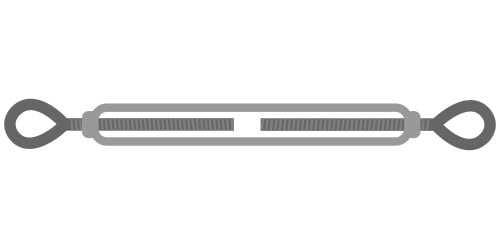
First up, the Eye and Eye Turnbuckle style is a favorite amongst consumers and can be used in any setting. This Turnbuckle style features a closed-loop, teardrop fitting on each end. In detail, the Eye and Eye Turnbuckle can be used as a shackle, attaching either end. The shackle pins just slid right through the eyes of the Turnbuckle.
2. Hook and Hook Turnbuckle:
Another commonly used Hook and Hook Turnbuckle, this hook end fitting is easy to connect and disconnect attachments. They’re used to connect a fastening point through the use of a shackle or quick link. Unfortunately, they don’t come equipped with a safety latch. We recommend not using this style in connection applications where an unexpected release could occur.
3. Jaw and Jaw Turnbuckle:
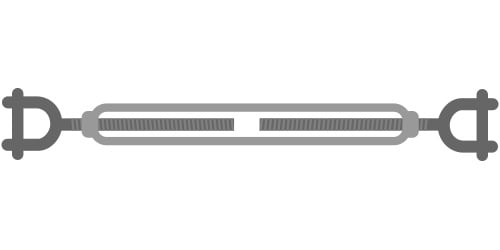
On the other hand, a Jaw End-Fitting Turnbuckle consists of a U-shaped jaw and bolt that are connected by a single pin. This style offers the option to connect the sling or lifting lug to the Turnbuckle. It also helps to connect components that cannot open on their own. Clearly, this style can be useful on many lifting jobs.
4. Hook and Eye Turnbuckle:
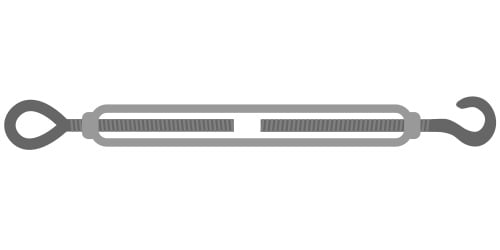
The Hook and Eye Turnbuckle is very similar to the Hook and Hook configuration. However, the eye end only allows for one end to be connected to the Turnbuckle. What is this particular Turnbuckle used for? The Hook and Eye style is primarily used to secure fences, support heavy loads and tighten wires on various structures.
5. Jaw and Eye Turnbuckle:
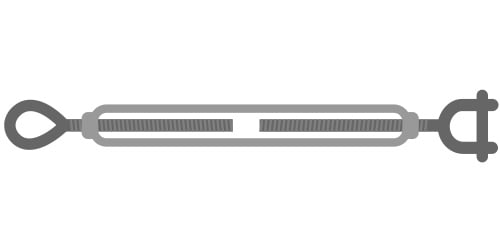
However, the Jaw and Eye style isn’t very common amongst consumers. Though, it’s very similar to the Eye and Eye configuration, but with the ability to connect to the lifting lug. Not to mention, they offer versatile solutions to help tension various types of cargo. The Jaw and Eye Turnbuckles often provide a secure connection on jobs like overhead and sailboat rigging.
How to Use A Turnbuckle?
Properly installing a Turnbuckle or any sort of rigging device ensures that it can be effectively used. They’re primarily used to control the amount of tension over a piece of wire or rope. In detail, a Turnbuckle can be used to adjust the tension in an assembly in a precise manner. The body of the rigging device itself is rotated to help expand and contract its length, while the end fittings remain in place. Throughout your usage of the Turnbuckle, you can either loosen or tighten the strap without ever having to twist the tether.
Additionally, the durable material of a Turnbuckle allows them to be adjustable without using any additional hardware tools.
Here are a few tips to help you remember how to properly use a Turnbuckle:
- Always know the working load limits (WLL) of your load before using a Turnbuckle.
- Unscrew the end fittings from the Turnbuckle body until they reach their maximum length.
- Connect all your end fittings to their fastening points.
- Keep turning the rigging device until the rope is tightened and the end fittings are drawn together.
- Tighten the nuts on the Turnbuckle’s body.
- The Turnbuckle must be loosened before removing from a cable.
In the end, you can get your job done faster and easier with a Turnbuckle.
When it comes to Turnbuckles, you can use them on almost any job. They can adjust a load the way you want it and make sure that everything remains secure. A Turnbuckle can make any lifting job seem like a walk in the park.


